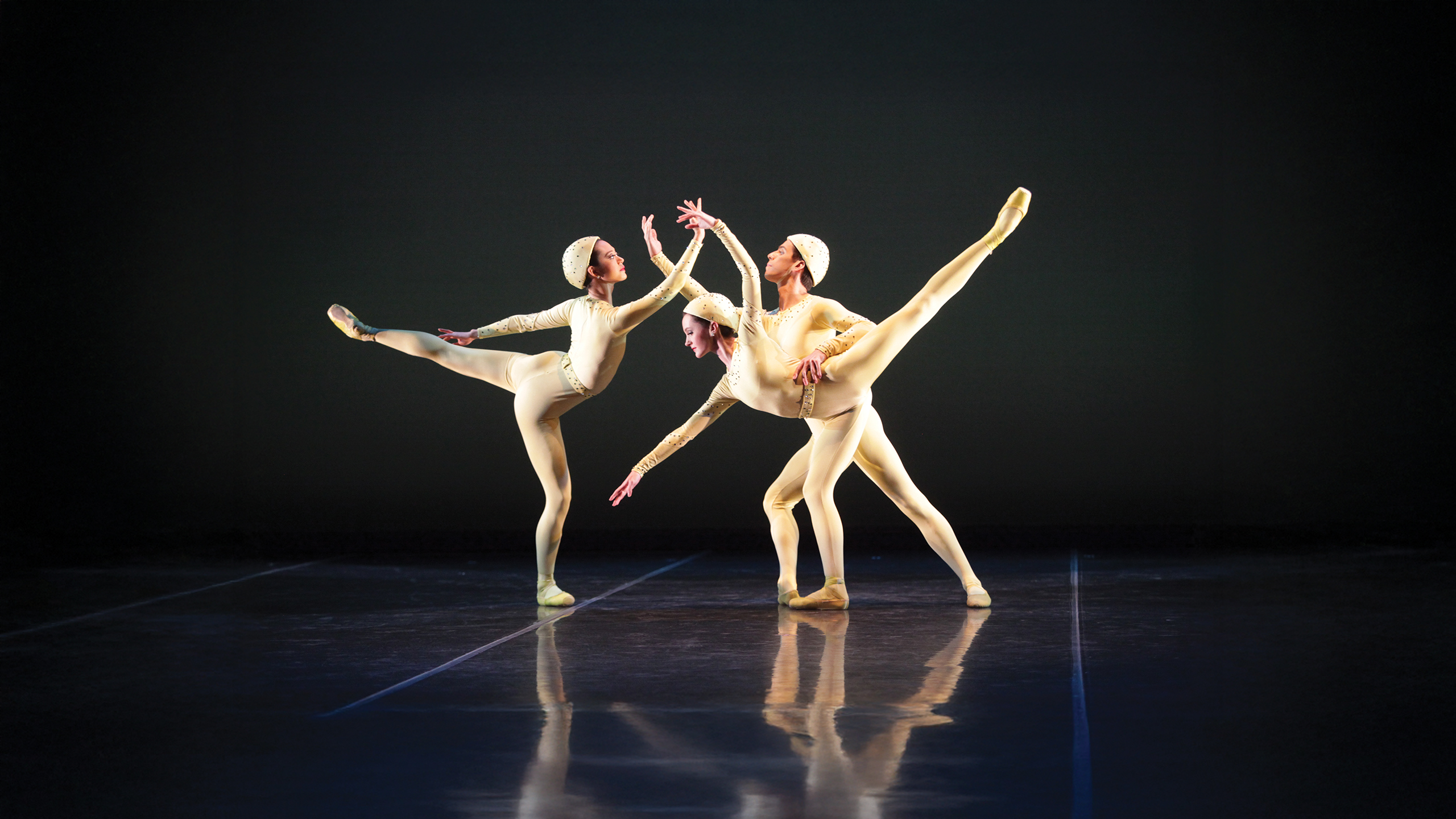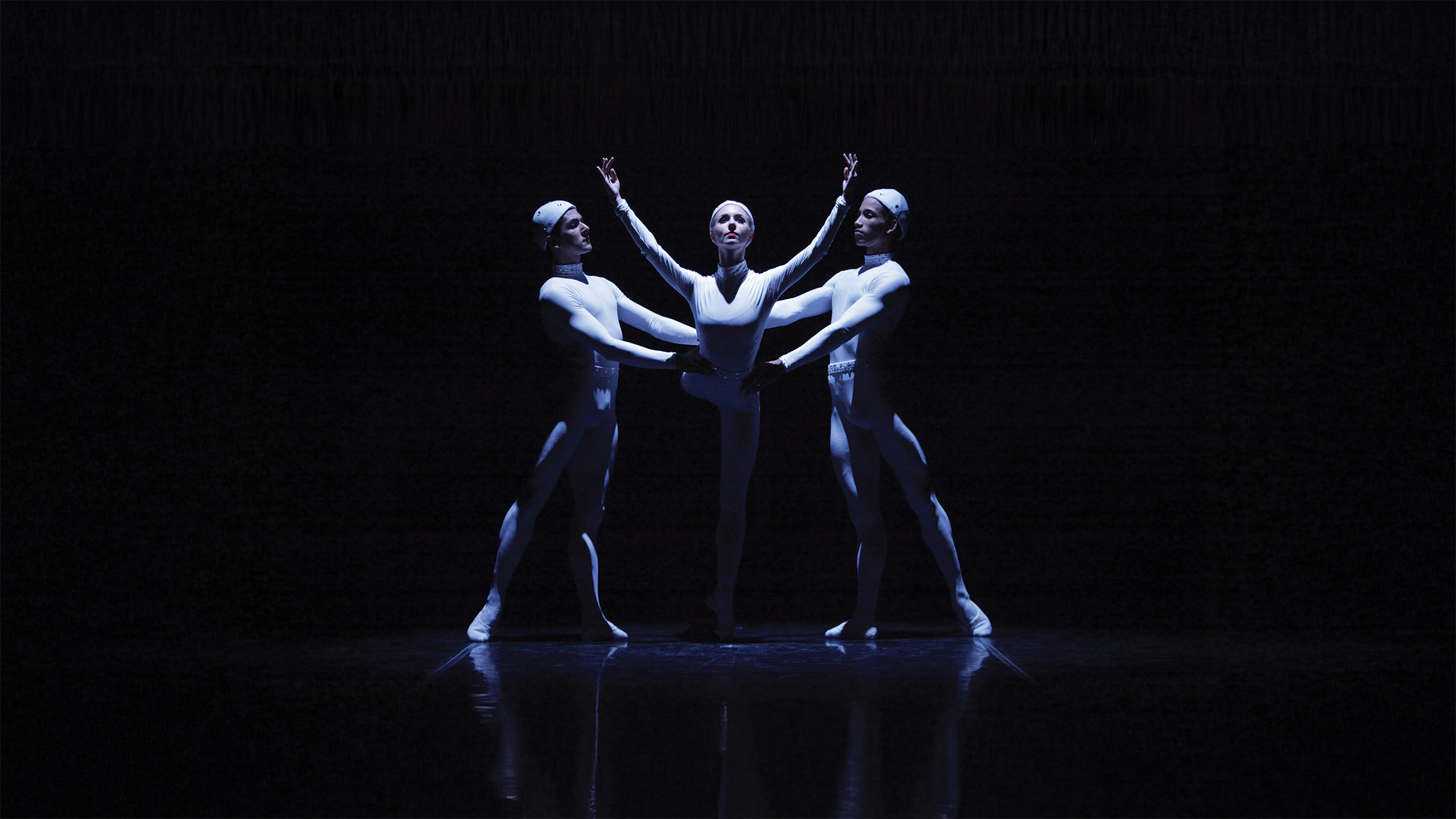Monotones I and II
Sir Frederick Ashton
Monotones II Premiered March 24, 1965, by the Royal Ballet
Monotones I Premiered April 25, 1966, by the Royal Ballet
Monotones I and II
At first glance, with its austere qualities and its firmly “contemporary” title (sounding more like a dance by Cunningham or one of the 1960s Judson Church experimentalists) Monotones I and II does not appear a typical Ashton work, but closer inspection reveals it as a characteristically sensitive and fine exercise in the great tradition of classical ballet adagio.
First came the ironically-titled Monotones II – which Ashton created as an abstract pas de trois, a special “occasion” piece for Vyvyan Lorraine, Anthony Dowell, and Robert Mead to perform at a Royal Ballet Benevolent Fund Gala in March 1965. Dressed in simple white unitards and skullcaps (very au courant in the moon-landing 1960s), the two men partnered the female dancer, the trio patterns and interactions echoing the title of Satie’s famous 1888 Trois Gymnopédies, originally composed as a piano solo and subsequently orchestrated by Claude Debussy and Roland-Manuel.
The short work was extremely well received, so in the following year, Ashton expanded the ballet by adding Monotones I to make a companion trio, this time for two women and a man, dressed in green. At the 1966 Royal Ballet premiere, Monotones I was danced by Antoinette Sibley, Georgina Parkinson, and Brian Shaw. The companion work, which precedes the earlier Monotones II, is set to Satie’s piano works Trois Gnossiennes (1890) and Prélude d’Eginhard (1893), especially orchestrated by John Lanchberry. The two abstract ballets are usually, but not always, performed together, as a single short work, in the original “opposite” order Ashton intended. Monotones has been in consistent demand by international ballet companies: Joffrey Ballet (1974), San Francisco Ballet (1981) etc.
Ashton fully grasps Satie’s intention to discard grandiose, orchestral sonority in the Germanic classical tradition, in search of a lighter, understated, melodic clarity, giving the ballet limpid, flowing lines, and precise calm, metronomic movements. Arlene Croce noted that “the continuity of Ashton’s line is like that of a master draftsman whose pen never leaves the paper.”


